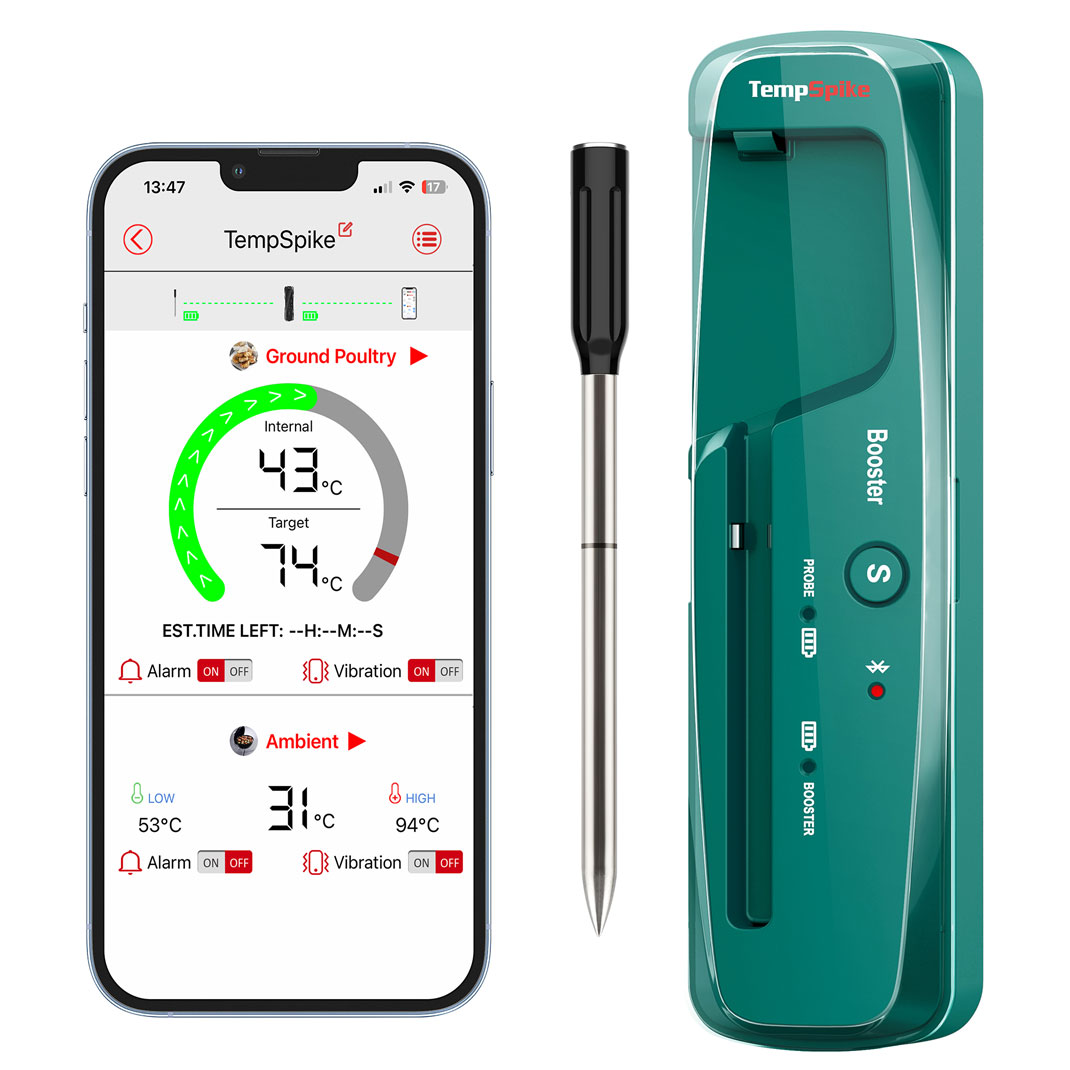Can Meat Thermometer Be Used for Candy?






 288 Comments
288 Comments
When making candy, whether at home or in a professional setting, the temperature is everything. Most recipes call for a candy thermometer to test the temperature of the ingredients, but not just everyone has this kind of thermometer lying around in their kitchen.
Indeed, those who are looking at making candy in the comfort of their home may question the need for a special thermometer that has no uses other than making candy. So can you use a meat thermometer as a candy thermometer? The simplest answer is yes, but it all depends on the thermometer. Meat thermometer usage can easily be applied to making candy, as long as the temperature rating is high enough, so read on for the answers to all your thermometer questions!
Types of Food Thermometers
There are a wide variety of thermometers that can be used in an even wider variety of cooking styles: instant-read, Old fashioned thermometers alike. Instant-read thermometers are any thermometers that can measure temperature at a glance, usually with a digital or electronic display. Old fashioned thermometers, on the other hand, usually feature a dial or scale readout that can be difficult to read at a glance, with a simple metal coil design. (For more information on different types of thermometers, check out this detailed breakdown: Types of kitchen thermometers. There are a few differences between a meat thermometer and a candy thermometer, which can make the usage a little more complicated.
Meat Thermometer VS Candy Thermometer: What’s the Main Difference?
Candy Thermometer
The most significant difference between meat and candy thermometers comes down to temperature. Candy thermometers have been around for centuries and are used to measure the “stage” of cooking sugar. As sugar and water heated in a saucepan, it begins to boil, the concentration of sugar increases, and the solution goes through several stages-from the syrup stage, at 110 degrees Celsius (230 degrees Fahrenheit), to the caramel stage, at 170 degrees Celsius (338 degrees Fahrenheit)-which determine whether that candy produced will be hard or soft. Because of their very high-temperature tolerance, candy thermometers can also be used to check the temperature of boiling oil when deep frying at home.

Meat Thermometers
By contrast, most meat products need only to be heated to a temperature between 63 and 77 degrees Celsius (145 to 170 degrees Fahrenheit). Obviously, when making candy, a thermometer needs to be able to read a much higher temperature than a thermometer that only reads meat temperatures. Most meat thermometers only read up to around 100 degrees Celsius (212 degrees Fahrenheit), as it is very uncommon for meat to go above that temperature during the normal cooking process.

The Meat of the Issue
In light of this fact, the only thing preventing meat thermometers from being used to make candy is the readout on the thermometer’s scale. If your meat thermometer goes up to almost 200 degrees Celsius (392 degrees Fahrenheit), then it can certainly be used to make candy, but very few old-fashioned, analog, metal and coil thermometers meet that simple standard. If your meat thermometer, like most old-fashioned thermometers, caps out at 100 degrees, then a candy thermometer may be a better choice for candy making.
Bigger Isn’t Always Better
It is important to note that, while candy and meat thermometers both come in a wide variety of shapes and sizes, most candy thermometers are going to be longer and thinner than meat thermometers, and have a pot clip used to attach to the side of a pot, which is useful for monitoring the temperature of boiling candy mixtures. It allows the user to check the temperature of the boiling sugar without as high a risk of burn from bubbling or splashing. While meat thermometers can also match this criterion, the shape is another critical factor to keep in mind when looking at purchasing a thermometer.

How to Choose?
Have a Game Plan
As discussed briefly above, the type of thermometer needed is going to vary widely depending on what you plan on cooking. Knowing ahead of time whether you plan on primarily using your thermometer to make candy or to cook up the perfect cut of meat can narrow down your options when looking for a thermometer. Make sure you’ve got a plan going in, and stick to it when shopping.
Pick a Type
If you’re going to use a meat thermometer to boil sugar and make candy, a digital thermometer may be more useful than the traditional, metal and coil style of a meat thermometer. Digital thermometers, like ThermPro TP511 Digital Candy Thermometer, don’t have the same temperature restraints as older thermometers do. It does not only allow you to measure candy temperature accurately, but also monitor other foods like sauce, milk, cake, meat, fried food. It is IPX5-rated waterproof and easy to clean up. Its anti-vapour backlit display also ensures a wonderful viewing experience.

A candy thermometer will always be the best choice for making candy. But if you’d rather buy a tool that has more than just one specific use in your kitchen, a digital thermometer is going to be a better choice than a traditional or instant-read thermometer, so make sure you have a good idea of what to look for before you start shopping!
Read the Manual
This may seem like a fairly obvious step, but if you’re purchasing a meat thermometer, especially a digital one, make sure you’re comfortable with using it before you start cooking. Some digital thermometers may seem more complicated than others, so when you’re looking to buy, try and find a thermometer that is simple, easy to use, and doesn’t require a degree in electrical engineering to operate. Again, thermometers like the ThermoPro TP-511 Digital Candy Thermometer promote a user-friendly interface that’s easy to understand, easy to read at a glance, and won’t take all day to program.
Keep an Open Mind
If you’re uncomfortable with using a meat thermometer for making candy, or if you’re not one hundred percent confident about operating a digital thermometer or monitoring from a distance, there’s absolutely nothing wrong with using a candy thermometer instead–it’s what these thermometers were specifically made to do, and they’ve been doing their job for going on seven hundred and fifty years.
On the other hand, if you don’t see the point of having two thermometers with overly narrow uses, as long as you get a thermometer that you know how to use, that can read high enough temperatures, and that is safe to use with extremely hot liquids, then you should absolutely get a meat thermometer for your daily cooking needs! Ultimately, it comes down to two things: the thermometer’s technical qualifications and your personal preference. As mentioned above, there are a ton of great meat thermometers available on the market today that can be used for cooking so much more than meat, and are ready for you to take them to the next level of culinary creation!
Putting It All Together
Can you use a meat thermometer for candy? Well, making candy at home can seem like a daunting task, but people have been figuring out better and simpler ways to do just that for centuries. With the wide range of candy and meat thermometers available on the market today, with digital readouts and ever-increasing temperature ranges, no matter which thermometer you ultimately choose, it seems like it would be difficult to go too far astray.
So long as your thermometer can handle the heat, and so long as you’re ready to act confidently and quickly, you can be sure that you’ll be one step closer to creating candied confections in the comfort of your own kitchen!





















